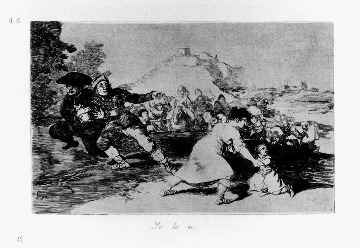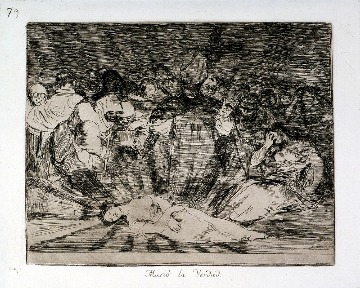Goya 《Los Desastres de la guerra》
Francisco de GOYA y Lucientes (1746-1828)
Los Desastres de la Guerra (Disasters of War)
(Set of Eighty Prints)
ca. 1810-20
Etching and other techiniques on paper
This collection of more than eighty etchings can be divided into two parts, each of which depicts two quite different worlds. In one part of the collection, Goya provides an eyewitness account of an era in turmoil. In the other part, he uses symbols and allegory to make an incisive attack on the sociopolitical system. He did not make these etchings in response to commissions from patrons; instead, he made them all of his own volition.
In the testimonial pictures, Goya has depicted disasters brought about by mankind and acts of God. He shows the horrors of the Peninsular War (1808-1814) and the famine in Madrid during 1811-1812 in a relatively detached fashion. Without lapsing into unnecessary patriotism, he has created images of people in extreme, horrifying situations.
The allegorical pictures attack the reactionary political movement of Ferdinand VII, who reigned from 1814 to 1833, and the clergy, who were thoroughly corrupt. Unlike in the testimonial etchings, which were relatively realistic, Goya uses images of horses, bats, and other creatures to personify the figures he is lampooning. At first glance, the pictures come across as quite humorous, but the sarcasm that he poured into these etchings is obvious.
It is believed that Goya began working on this series around 1810. This was right in the midst of war - a time that was hardly conducive to artistic production. One can tell that times were tough from the fact that the pictures are not of a uniform size. Shortages also caused him to use both sides of his copper plates. Although he continued working on this series for about a decade, his work was intermittent. This series was never published by the artist himself, perhaps because of his position as court painter or a lack of money. The world would have to wait until 1863, thirty-five years after his death, to see the entire series.
-- Ikuta Yuki


